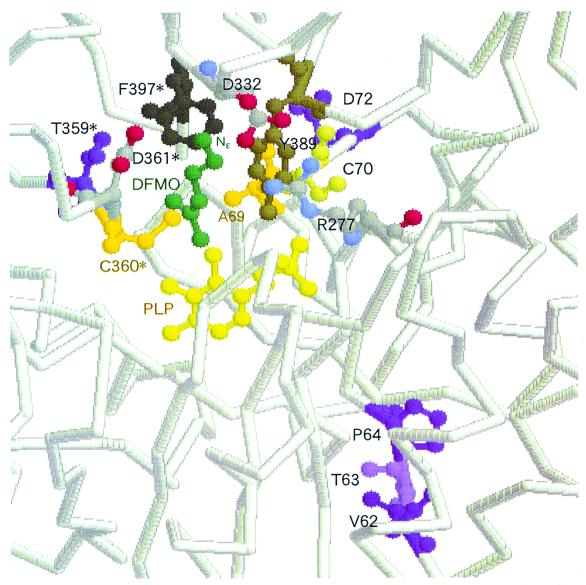FIG. 6.
Active site of K69A T. brucei ODC in complex with DFMO. The figure was drawn based on the data of reference 7 using the RasMol 2.6 Molecular Graphics Visualisation tool (Glaxo Wellcome Research & Development Co., Stevenage, Herts., United Kingdom). In reference 7, the N terminus of recombinant T. brucei ODC corresponds to the 21st residue of intact ODC (Fig. 3). Residues (V62, T63, P64, D72, and T359) which correspond to the residues mutated in this study and were identified as functionally important for substrate specificity in S. ruminantium LDC are purple and violet. The atoms of PLP are yellow, the atoms of DFMO are green, A69 and C360 are orange, and Y389 and F397, which cradle the aliphatic portion of DFMO, are brown. R277, D332, and D361 are also shown, and nitrogen and oxygen atoms of these residues are blue and red, respectively. The asterisked residues belong to the other subunit of the dimer.

